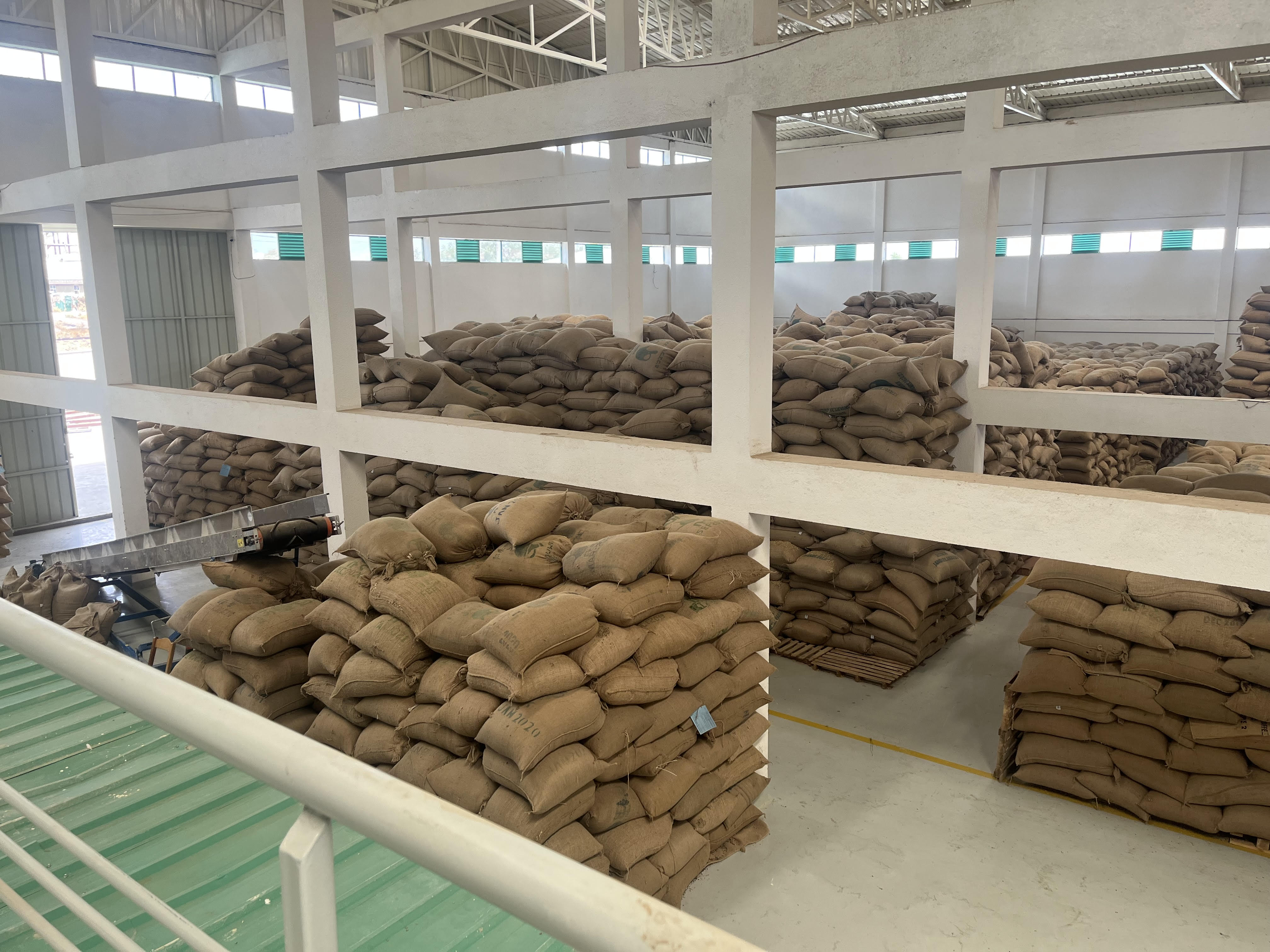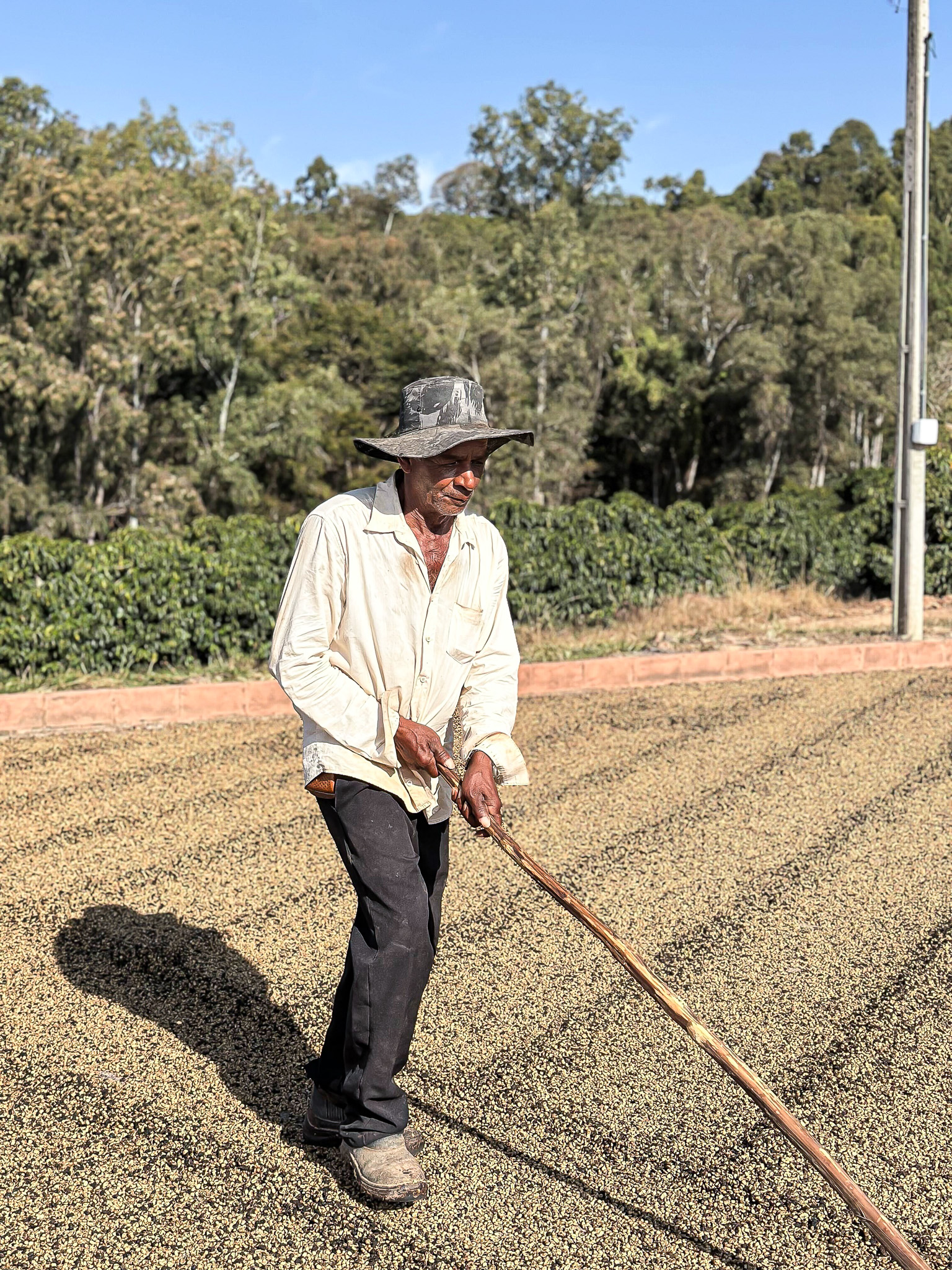Peru

Washed and naturals sourced via producers, cooperatives, & suppliers driven by the specialty coffee market.
We have been sourcing from Peru since 2018. By partnering with young exporters and cooperatives who are focused on promoting the specialty segment, our aim is to incentivise producers to further the quality of their production, ensuring full traceability, and offering solid premiums to small farming communities. Through quality oriented programs, our partners are focused on training smallholders to establish proper farming and processing protocols, rewarding them for their investments.
Harvesting season
May – October
Arrival times
October – December
Quantities
3 - 60 bag lots
Packaging
69 kg bags
Cultivars
Bourbon, Caturra, Pache, Catuaí, Marshell
Processes
Mostly washed, processing is done on the farms in micro-mills. Mainly dry fermented in small wood or concrete tanks. Some naturals & anaerobics.
Flavour profiles
Chunky, jammy fruit, or tealike, elegant, yellow fruit, & floral.
Usage
Can be used for everything from complex filter brews to rich, sweet, and creamy espressos.
Shelf life
Normally holds up well for 9 months to a year. We can never guarantee more than 6 months after arrival for any coffees.
We source from the northern regions of Peru, including Jaen, Lonya Grande, Amazonas, and San Ignacio in Cajamarca, concentrating on both community lots and microlots.
When we encounter high-quality coffees with a sufficient volume, we aim to separate them as microlots and sell them under the name of the individual producer. On the other hand, if individual, high-quality lots are produced in small volumes — not enough to be separated as microlots (such as 3 bags or less), we use the opportunity to create community lots or value-added blends. These blends are traceable, curated based on the micro-region, community origin, picking time, and flavour profiles of the contributing farmers.
A farmer's coffee can often contribute to both microlots and community lots. This is impactful for each producer, as we can buy more from a specific producer, while it also allows us to curate a large selection of coffee from the same micro-region.
However, the challenge for farmers in Peru is the tendency for most high-quality coffees to end up in large, regional blends sold at very low prices. This compromises the financial viability of quality cultivation, dissuading many producers from investing in quality.
Despite these challenges, forward-thinking cooperatives and young exporters in Peru are leading the development of the specialty coffee segment. By implementing quality programs to enhance cup quality, they ensure financial rewards for producers' investments. Our focus aligns with partnering with such organisations, including Cedros, Origin Coffee Lab, Aromas del Valle, and Norcafe. Through collaboration, we ensure that farmers receive high premiums for the production of both microlots and community lots.
Our commitment to quality is reflected in the premiums we offer, which are significantly higher than the local price. Despite the premium pricing, we firmly believe that our coffees offer exceptional value for their quality.

A step-by-step overview

In medium to low altitudes, many producers grow strains of Catimor. At higher altitudes, different varieties are present, with the most common being Bourbon, Costa Rica (a Bourbon type), Red and Yellow Caturra, Typica, Pache (a dwarf Typica), and occasionally Catuai in the North.
Typica is the main variety in the South. Several farmers have also started planting Geisha. Most of Peru’s coffees are organic. The general spacing on farmland is 2x1 metres, which allows for around 5000 trees per hectare. Yields are often low, at around 1 tonne per hectare (or less), or 500 grams of greens per tree.
Most farmers use compost, and those who can afford it use organic fertilisers. Farmers who implement organic practices, if conducted properly, can reach a yield of up to three times more than the average.
Due to limited resources, most farmers cannot afford to hire pickers during the harvest. In response, they organise “mingas”, which are communal working sessions. Farmers from the entire community gather at one farm to pick cherries or engage in other necessary tasks; a collective locally referred to as "today for you, tomorrow for me."
Post-harvest production (processing) is the biggest challenge when it comes to quality. The coffees are mainly processed at micro-mills on the farms, with very limited resources. There are a few setups that are more advanced, with improved pulpers, fermenting tanks and Colombian style solar dryers.
Some areas also work with producer groups and associations with small, communal washing stations for processing, or bigger washing stations under construction. Peruvian coffees are mainly dry fermented in small, wooden, or concrete tanks.
Quality
Peru holds immense potential for quality coffee, though it's often associated with certified coffees sold at low prices. To promote quality in this region, we collaborate with suppliers focused on quality programs, traceability, and fair premiums for producers. While many Peruvian producers prioritise organic certification, this alone doesn't guarantee high-quality coffee. Our role involves encouraging producers to prioritise cup quality alongside certification requirements, aiming for gradual improvement. We source coffees with jammy fruit, perfumed florals, and excellent structure and complexity. We select microlots and create blends from the same communities, ensuring quality despite smaller lot sizes.
Transparency
We consistently offer high premiums for quality, well surpassing local prices, yet our coffees remain exceptionally good value for their quality. For coffees meeting our quality standards in terms of humidity, water activity, and scoring a minimum of 85, we establish a base price that exceeds the average market price per quintal. Coffees scoring above 87 and with adequate volume for a microlot receive an additional premium per quintal after contracting and exportation.
Impact
Consistency in returning to the same producers annually is crucial for fostering trust and stability in our professional relationships. Alongside fair pricing, prompt and reliable payment is equally important, as many producers heavily rely on coffee for their income. This enables them to reinvest in their operations, benefiting their livelihoods and the quality of their products.
When undertaking new projects and introducing them to the market, we must consider their feasibility and economic viability for producers. This responsibility starts with choosing dependable partners at origin. We work with specific cooperatives and exporters who actively promote specialty coffee, offering quality programs and financial incentives to producers.
As demand for specific coffee types rises, it's essential to communicate these preferences transparently to producers and ensure that any changes in their operations bring tangible benefits. For instance, producing naturals offers increased product differentiation and economic potential for producers as they refine their processing methods and infrastructure. However, we must always consider the long-term feasibility and economic viability for the producer and ensure that such an investment will bring value.

About the origin
There are ten growing regions in Peru. The regions we see with most potential for quality are Cajamarca and Amazonas in the North, Junin in what they call the Central Jungle, and Cusco and Puno in the South. Cajamarca is the biggest producing region. Here, you can find farms at altitudes above 2000 masl. Higher is not always better, as there are plenty of great coffees being grown at 1600 masl, and you can find incredible lots at even lower elevations.
Some say that coffee growing in Peru started in the Central Jungle, while others say it began in the North. Growers of German and Italian descent started farming coffee in the 1800’s. Many of the growers currently working in the Cajamarca came from the Piura region in the West, in the 1950s and 1960s.
Until recently, a lot of focus has been placed on certification; be it organic, Fairtrade or UTZ. Coffees are still mainly sold in bigger chunks of commercial and high commercial qualities, up to 84 points, at really low prices. For many, this is unsustainable. In Puno, for example, production has dropped from 180000 bags to 8000 bags because of leaf rust and the low C-price. Several cooperatives went bankrupt, and many coffee producers switched to coca production. It is more profitable and easier to grow, while buyers are always ready to purchase it for cocaine production.
Farmers are typically smallholders with around 2-5 hectares of farmland. Coffees are usually processed at small micro mills on the farm. Farmers deliver parchment to exporters or cooperatives who cup and grade the coffee, dry mill and export green coffee.
Interested in this origin? Talk to your sales rep.




What’s new?
The latest updates delivered to your inbox.
Subscribe to our newsletter for the freshest news on origins, harvests, new producers, our coffee list, and market insight.

.jpg)














.jpg)



.jpg)
.jpg)

